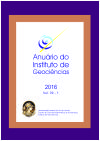Avaliação de um Solo em Termos de Resistência à Compressão Simples, Resistência à Tração por Compressão Diametral e Módulo de Resiliência, Considerando Resultados de Diferentes Tipos de Compactação
DOI:
https://doi.org/10.11137/2016_3_41_47Palavras-chave:
Compactação Proctor, Tipos de compactação, Propriedades mecânicas.Resumo
No Brasil, o ensaio laboratorial de compactação Proctor é normatizado pela Associação Brasileira de Normas Técnicas (NBR 7182/1986) e pelo Departamento Nacional de Infraestrutura e Transportes (DNIT -- ME 164/2013 e DNIT -- ME 162/1994). As normas apresentam diferentes alternativas para executar a compactação Proctor, no entanto, verifica-se que o comportamento mecânico de um solo compactado é função do índice de vazios, do grau de saturação e principalmente da estrutura do solo que é diretamente influenciada pelo processo de compactação adotado. Este trabalho teve como objetivo comparar quatro processos distintos de compactação (mecânica com reúso, manual com reúso, manual sem reúso e manual sem reúso com umedecimento da amostra 24 horas antes da compactação), utilizando a energia intermediária, com a pretensão de avaliar os seus efeitos nas propriedades de resistência à compressão, resistência à tração e resiliência de um solo. A fase experimental foi dividida em três (3) etapas: ensaios de caracterização do solo, ensaios de compactação Proctor e ensaios mecânicos (Resistência à Compressão Simples - RCS, Resistência à Tração por Compressão Diametral - RT e Módulo de Resiliência - MR). Por meio dessa pesquisa, constatou-se que o tipo de compactação utilizado exerceu uma influência significativa nos resultados, pois de um modo geral os valores de RT , RCS e MR obtidos na compactação manual sem reúso 24h foram superiores as demais compactações.
Downloads
Publicado
Edição
Seção
Licença
Os artigos publicados nesta revista se encontram sob a llicença Creative Commons — Atribuição 4.0 Internacional — CC BY 4.0, que permite o uso, distribuição e reprodução em qualquer meio, contanto que o trabalho original seja devidamente citado.
















 Exceto onde indicado de outra forma, o conteúdo deste site é licenciado sob uma licença
Exceto onde indicado de outra forma, o conteúdo deste site é licenciado sob uma licença 